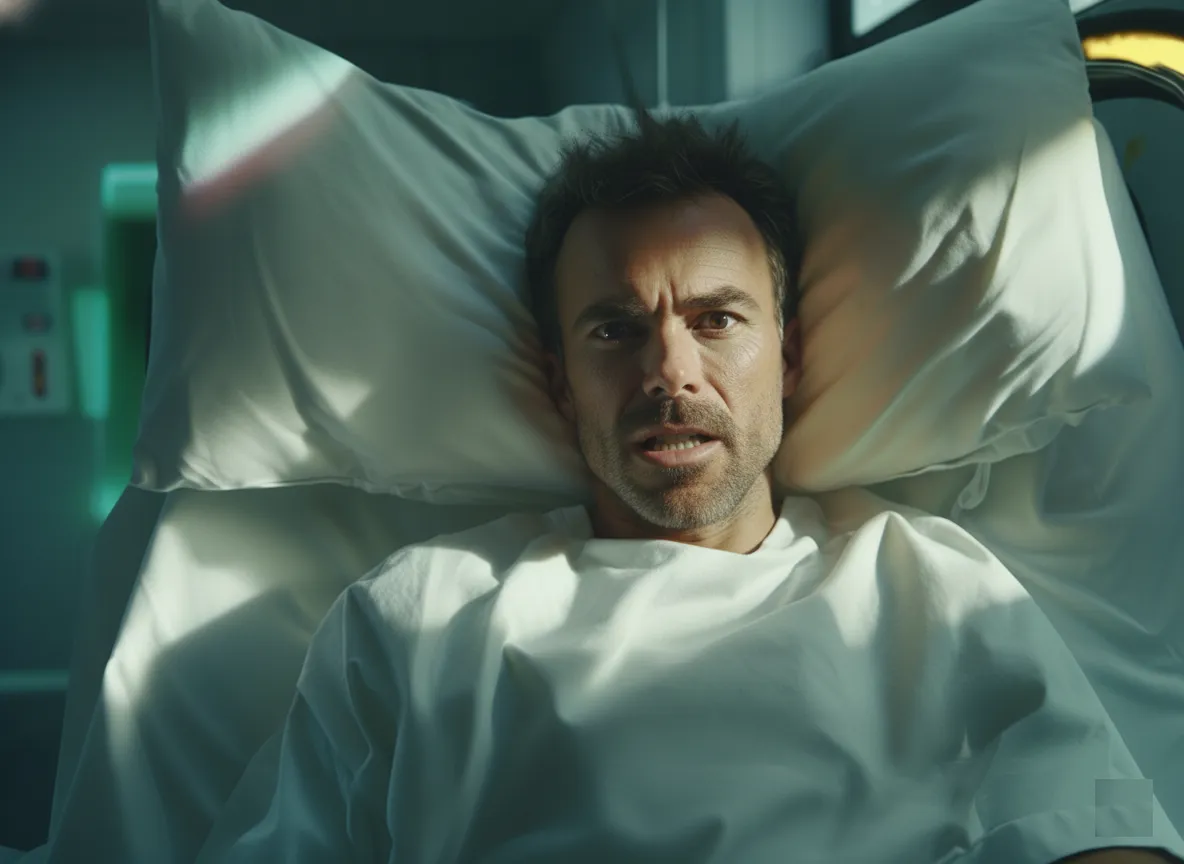The night shift at Memorial Medical was always still before dawn. In Room 304, a monitor began to chirp irregularly—first a blip, then another. The nurse’s shoes squeaked across the tile, calling for Dr. Helen Sloane. A patient coded by a number—4211, comatose for seventeen years, had moved.
Helen hurried in, coat half-buttoned, heart quickening as the steady rhythm on the screen broke pattern. The man’s fingers flexed, brushing the sheets like someone remembering touch. His breathing caught, harsh and uneven, a forgotten sound forcing its way back through decades of silence.
She leaned closer. Pale lids fluttered, revealing eyes clouded yet startlingly aware. The fluorescent lights reflected in them like fragments of another world. Helen froze; medicine had trained her for recovery, not resurrection. “Can you hear me?” she asked softly. His lips moved, but the answer came out as a broken sound.
“Warn…mrr…lin…,” he rasped, consonants slurring together. The rest dissolved into a dry rattle, more air than language. Helen frowned, wondering if he was trying to form words or simply forcing his throat to work again. Whatever he meant, it slipped away before she could catch it.

Helen adjusted the oxygen line. “You’re safe,” she said automatically, but even as the phrase left her, it felt thin. The man’s eyes darted toward the ceiling, unfocused yet searching. He inhaled sharply, like someone bracing for an impact no one else could see.
He whispered again, louder this time, but the syllables tangled. “Ma…rr…in…rr…evacuate.” The muscles in his neck strained; sensors blinked red, recording a pulse racing from something deeper than pain. Helen steadied his shoulder, murmuring calm, though unease spread through her chest like an echo from underground.

“Easy,” she said. “You’re at Memorial Medical Center.” He blinked as if the words meant nothing, gaze sweeping the room of machines, digital screens, sterile light. To a man last conscious so long ago, even safety must have looked unfamiliar, like waking in the future by mistake.
“I am—” he croaked, searching for the rest, but it died on his tongue. Helen hesitated; the record offered no name. His wristband bore only a number: Patient #4211 — Found near Old Coast Highway, 2008. Beneath it, a faded note explained the trauma. No ID found; presumed coastal storm victim.

He tried to lift his hand; tremors rippled through his arm. They were not the random spasms of weak muscles, but something almost intentional, as if he were tracing invisible lines in the air. His eyes flicked toward the window. “Still…moving,” he mumbled, the phrase collapsing before it formed.
Helen recorded the episode in the chart, pen hovering at the diagnosis line. Unstable motor response? No, that wasn’t it. The tremor didn’t feel purely neurological; it felt like memory trying to surface and drowning halfway. She watched his chest rise and fall, thinking, He’s not just waking—something is trying to get through.

The days that followed blurred into half-sounds and broken syllables. He drifted between lucidity and delirium, eyes flickering as if watching something collapse behind them. Helen jotted any coherent fragment she caught: “heat…,” “vent….” Each piece felt like part of a sentence that refused to finish.
She’d never seen recovery like it, especially in a patient still for so long. His brain, dormant for nearly two decades, now produced strings of words, though sounding like nonsense, she knew was more. He could barely lift a spoon, yet she thought she heard “pressure” and “gradient,” as if his professional vocabulary had survived untouched.
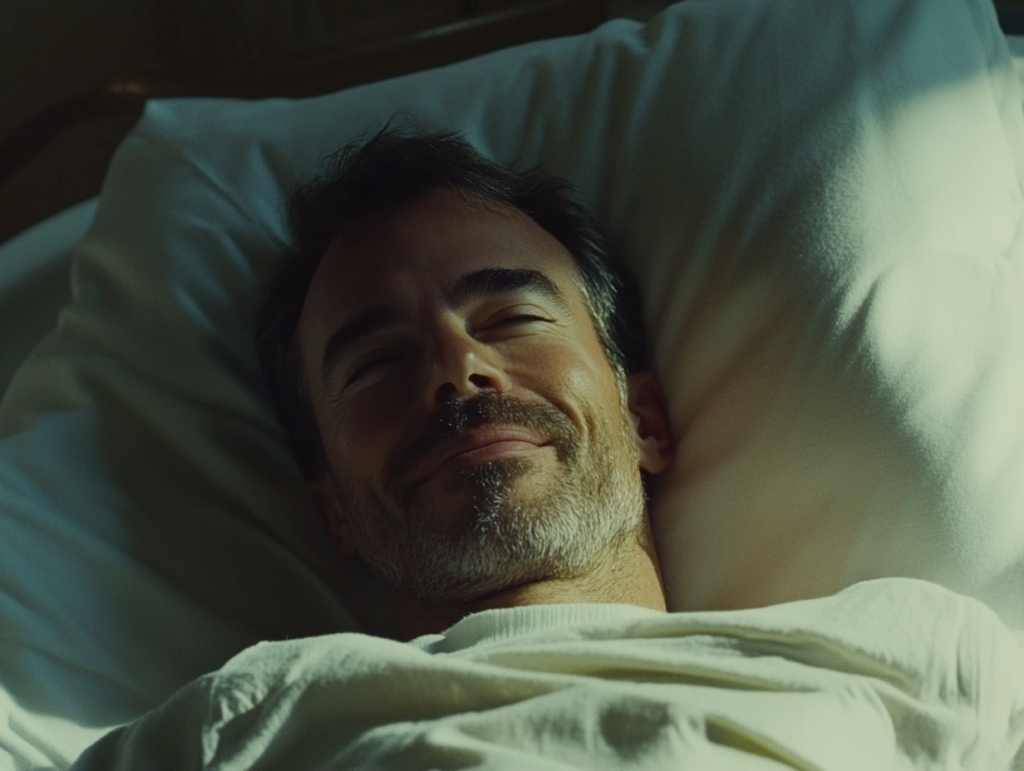
Helen didn’t believe in coincidences. Every phrase he half-spoke returned to the same notions: heat, movement, collapse. When she asked where he’d learned those words, he only managed a faint smile, eyes half-open. “Studied…” he murmured, then slipped back under, the rest swallowed by exhaustion.
One morning, during a rare moment of clarity, Helen tried again. “Do you remember your name?” He frowned, lips forming around a sound like it hurt. “Cal…” he rasped. “Cal…,” and then it twisted into “caldera,” the word breaking into two pieces as his body sagged, drifting back into sleep.

A nurse laughed softly. “God knows that’s a weird name.” Helen didn’t laugh. The word nagged at her—caldera. That evening, long after rounds, she looked it up. A volcanic crater formed by collapse after an eruption. Collapse. Eruption. Why did every fragment of his language circle danger? Who was this man?
His scans showed mild neural scarring. It was enough to explain partial memory loss and jumbled speech, but not the stubborn clusters of technical terms that kept returning. He wasn’t babbling nonsense. There was structure buried in the brokenness. Helen found herself reading old notes at midnight, trying to understand how knowledge survived where identity frayed.
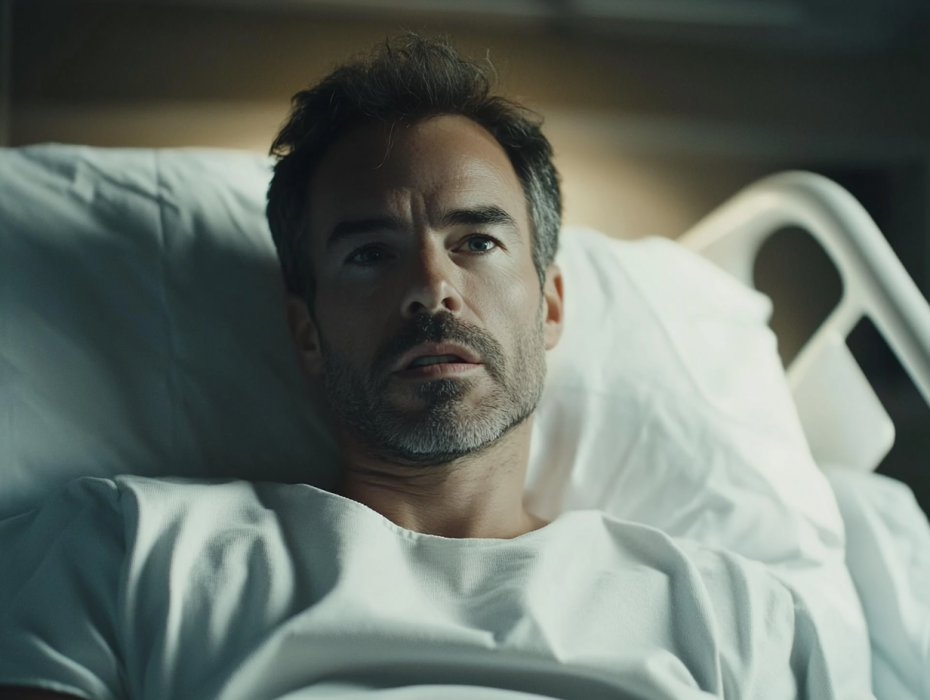
He woke suddenly during her next visit, eyes wide and disoriented. Before she could speak, his fingers closed weakly around her wrist. “Report…warning…dangerous…” he whispered. The rest came out as a tangled string of consonants. “Under…the cliff.” His brow furrowed with frustration, as if the words betrayed him.
“Report where? Which cliff?” she asked gently, but whatever answer he had dissolved. His grip slackened; monitors calmed into a fragile pattern. Helen stood there, his half-formed sounds looping through her mind, the way a half-remembered dream insists on meaning even after it slips away.

Later that night, she reopened his file. “Trauma: cranial impact, exposure.” Rescue logs revealed he’d been discovered miles inland from where a storm had torn through a mining zone. With no ID and damaged facial features, he’d been filed as Patient Unknown, transferred between long-term facilities, and returned to Memorial only recently for renewed observation.
Cross-referencing rescue records, she found an old photograph: workers hauling a stretcher near fractured rock. In the corner, a sign half-buried by mud read Marlin Ridge Mine—Restricted. The name made her skin prickle. Something in his first garbled syllables had sounded like “Marlin.” Maybe that hadn’t been random after all.

Helen closed the record and opened a new notebook on her desk. Across the top, she wrote: Notes from Patient 4211. Beneath it, she started listing his fragments, his gestures, their patterns. She wasn’t sure why she cared so much, but curiosity had quietly shifted into something closer to responsibility.
On the night shifts, when the ward fell silent, she quietly recorded him. “Warn… vent… rising… evacuate…,” he mumbled, sound sliding in and out of sense. Her pen scratched across paper. Even half-conscious, his mind kept orbiting the same terrain—the earth itself—as though that part of him refused to fade.

The following evening, Helen searched the missing-persons archives out of instinct. It took time; the case was nearly two decades old. Finally, one record made her pause: Ward, Caleb. Geologist. Missing since 2008. Last contact: Marlin Ridge survey. Next of kin: Rachel Ward.
The case was closed. Caleb Ward had been presumed dead. Somehow, no one had connected this unknown patient with this missing man. She stared at the “Next-of-kin contact: Rachel Ward”, pulse quickening. But the old number listed beneath it didn’t connect anymore. There was an empty signal and silence.

She contacted the county sheriff’s office next, asking for any information on the missing geologist and telling them about her suspicion. The detective who took her call paused when she mentioned the name “Caleb Ward.” The case, he said, had gone cold long ago—no body, only scattered gear recovered after the storm.
He explained that identification in 2008 had relied on limited databases; long-term care patients weren’t routinely cross-matched then. “If your coma patient is Ward,” he said cautiously, “you may have found someone we lost twice.” He asked Helen to keep him updated; he would meanwhile try reaching out to Ward’s last known kin.

During quiet hours, Helen began feeding his recorded speech into a linguistic tool used in neuro-rehabilitation. The transcript startled her. Amid the broken phrases, distinct clusters of geological vocabulary appeared like fault lines in language: basalt, magma plume, pressure gradient, ridge shift. This wasn’t random—something in him was still working.
She watched as the tool highlighted recurring terms with clinical precision. He wasn’t just remembering words; he was remembering work. Helen cross-checked his fragments against geological literature, finding them again and again in papers about geothermal anomalies and seismic risk. The pattern was too specific to ignore.

By the third night, her curiosity had tipped into obsession. She compiled a list of his clearer terms and sent them—without context—to a contact in the university’s Earth Science department. “Any recent research jump to mind when you see this vocabulary?” she asked. The reply came within hours.
“These terms match the work of Dr. Caleb Ward,” her contact wrote. “He was working on a geothermal anomaly beneath Marlin Ridge—old mine territory. He argued it could destabilize the coastline. Disappeared before finishing the project.” Helen stared at the message, heart racing. The name from the database had just stepped closer.

She returned to the missing-persons entry. Dr. Caleb Ward, PhD. Geologist. This time, she noticed the small, grainy photograph beside the listing. The jawline, the eyes—different under years of swelling and time, but similar enough to steal her breath. The unknown patient might not be a drifter at all, but a scientist caught between eras.
The report included the same sister’s name: Rachel Ward. Some technological gap, or human oversight, had failed to connect the missing scientist with the anonymous patient rescued near the mine. The file ended there. With an old address, a phone number that no longer worked, and a note that said simply: Presumed deceased.

Setting aside her frustration, Helen spent the evening tracing every digital breadcrumb until one result stood out: R. Ward, Environmental Science Department, retired in 2021. Could it be? Helen stared at the email address for a long moment, fingers hovering over the keyboard.
Finally, she wrote: Ms. Ward, this may sound incredible. I’m a physician at Memorial Medical Center. A long-term coma patient has woken, and I strongly suspect he may be your brother, Caleb. She hit send before she could overthink it, the message feeling like a flare tossed into thick fog.

Hours later, an alert blinked across her screen. The reply was brief, cautious, trembling between disbelief and hope: That’s not possible. They found part of his gear—a helmet and a few notes—but not him. Helen replied, explaining that formal next-of-kin identification would involve law enforcement.
After Helen’s call to the detective, Rachel’s second email came: If there’s even a chance, I’m coming. The detective called me. He said it might be my brother. The words carried a weight that made Helen sit back in her chair. Somewhere, a search that had once ended years ago was being quietly restarted.

That night, Helen couldn’t sleep. Caleb Ward’s name echoed in her thoughts, heavy with unfinished business. She looked out at the city lights glowing like soft embers and wondered what it would mean for a man to wake into a world that had not only moved on, but built new lives above the places he once studied.
Restlessness pushed her back to research. She dug through public works records and geological archives. There it was: a decommissioned geothermal plant built directly over the fault vents of Marlin Ridge. The last inspection report, dated five years ago, mentioned “minor thermal fluctuations.” Recent data showed pressure trending upward.

Helen stared at the charts. The anomaly mirrored the kind of pattern Ward had reportedly investigated before his disappearance. Her fingers trembled as she compared coordinates. Everything matched. The town above those vents had only grown. Schools, subdivisions, new housing projects—all rising over old faults.
A tremor had rattled parts of the region not long ago. It was small, but she remembered news clips replayed swaying chandeliers and rippling glasses. A USGS alert had flashed: Epicenter—near Marlin Ridge. It was minor, but uncomfortably aligned with the vocabulary spilling from her patient’s fractured mind.

When she went to Room 304, he was awake, pupils dilated, as if he could feel tremors right then. Helen approached slowly. “Have you remembered anything more?” she asked. He stared past her for a moment, then uttered a string of tones that almost became a sentence, and then he fell back.
“Release…pressure,” he whispered, as if testing each sound. Then the effort drained him, and his eyes slid shut again. The monitors steadied. Helen exhaled, half in frustration, half in awe. The warning, if that’s what it was, remained locked inside syllables that refused to cooperate.

Outside, thunder rolled over the city, faint but continuous. Helen sat beside his bed long after her shift ended, staring at the slow pulse line on the monitor. Machines hummed around them, a man-made echo of a deeper vibration she couldn’t yet name.
For the first time, she felt an unsettling sense that she was perched on something alive—restless, waiting. As she watched the geologist sleep again, she realized this wasn’t just a medical recovery. It was a message, still buried under years of silence and scrambled speech.

Helen submitted a formal request to the university archives for Ward’s research notes. The reply arrived within the hour: Access restricted. Industry-funded confidential research. Liability concerns. She stared at the denial, heartbeat climbing. Whatever he had uncovered wasn’t simply lost; someone had put it behind a locked door.
She combed through his published papers until a familiar name surfaced—Dr. Mark Yeats, listed as his former assistant. Helen drafted an email using her credentials: I’m treating a patient whose language patterns match your late colleague’s research. Any context about the Marlin Ridge project could help his rehabilitation.

The response came just after midnight. “Ward predicted an underground pressure inversion beneath Marlin Ridge,” Yeats wrote. “He argued the vents were sealing from below, trapping heat. Nobody funded mitigation. Then he vanished before publishing.” Helen stared, one question pulsing in her mind: Did he vanish, or was his work buried?
The next morning, Rachel Ward arrived with the detective from the sheriff’s office. She was smaller than Helen expected, hair streaked with gray, but her eyes were sharp. The detective carried an old folder, its edges worn. “We’ll need to see him,” he said quietly. “We have the original photos to verify with.”

Helen led them to Room 304. The man lay propped against white pillows, looking both older and strangely young, like time had been paused around him. Rachel paused in the doorway, hand clamped around the folder. “Caleb?” she whispered, voice shaking. His eyelids fluttered.
The detective glanced between the bed and a faded photograph, noting bone structure, scars. “Strong resemblance,” he muttered. “Given the storm, the injuries… it’s plausible.” But it was the next sound that sealed it. The patient’s lips moved, and a quiet word surfaced from somewhere deeper than confusion.

“Rach,” he whispered. Rachel’s knees nearly buckled. “He’s the only one who ever called me that,” she said, covering her mouth. The detective nodded slowly. “Under the circumstances, the photo, the prior rescue logs, and that recognition, I’m satisfied to move this from Patient Unknown to Ward, Caleb. Official ID—reopened case.”
That moment needed no lab report. Caleb’s identity was confirmed through memory, both emotional and procedural. Helen documented it for the official record, though words felt inadequate. In that instant, Caleb Ward existed again, not as a number, but as a man with history, and a warning no one had fully heard yet.

From then on, Rachel rarely left his side. She spoke softly about their childhood, their parents, the years she spent emailing police and universities before giving up. At first, he only managed her nickname and scattered syllables. But the longer she talked, the more his speech began to lengthen around her voice.
One afternoon, as Rachel described the ridge where he’d once taken her hiking, something snapped into place. Caleb’s gaze sharpened. “They… built… more?” he managed. Rachel froze. “Yes,” she said slowly. “After you vanished, they expanded. Houses. Shops. They said the reports cleared it.” His breathing hitched, and this time the words came with more force.

“Not… cleared,” he whispered. “Pressure… trapped.” The syllables were broken, but the intention behind them had shifted. They were no longer stray terms; they were parts of a sentence, fragments of a warning he’d tried to deliver seventeen years earlier and never finished.
Rachel looked at Helen, eyes wide. “He was working on a geothermal paper,” she said. “He knew it was controversial. He warned authorities about something under Marlin Ridge—that the ground wasn’t stable. They called it paranoia.” Helen wrote every word down.

“Vents… sealed. Heat… rising,” he murmured. “Town… on top.” This time, there was no mistaking the words. Rachel swallowed hard. “He told them that before,” she said quietly. “He said the ridge was moving from beneath, that building there was like putting a roof on a boiling pot.”
The fragments finally clicked into place. What had seemed like random technical noise was now forming a coherent pattern, guided by the one person who knew his language best. Helen felt a chill. This was the first time his speech felt less like recovery and more like a delayed alarm.

Rachel helped Helen decode his speech faster. From her memory of his work, she explained how exactly the town over the ridge was an ecological disaster waiting to unfold. Together, they built a crude map of a plan on hospital paper.
Still, Helen needed proof—something irrefutable. When her second archive request was also ignored, she went to a decommissioned plant records office that stored unsorted boxes from the 2008 project. The air smelled of damp paper and dust. A clerk shrugged. “If his file survived the storage fire, it’s in there somewhere.”

In a forgotten cabinet, she found a folder, edges brittle and browned. The tab read: Ward, C. Inside lay fragments of his original proposal, stamped Withdrawn — Incomplete Data / Industrial NDA. A sketch survived. It was a hand-drawn map, fault lines circled in red.
In the corner margin, a handwritten note caught her breath: “Pressure build = inevitable release.” The words were underlined twice. The date beside them was just weeks before the storm that had nearly killed him. It wasn’t just a hypothesis. It was a countdown.
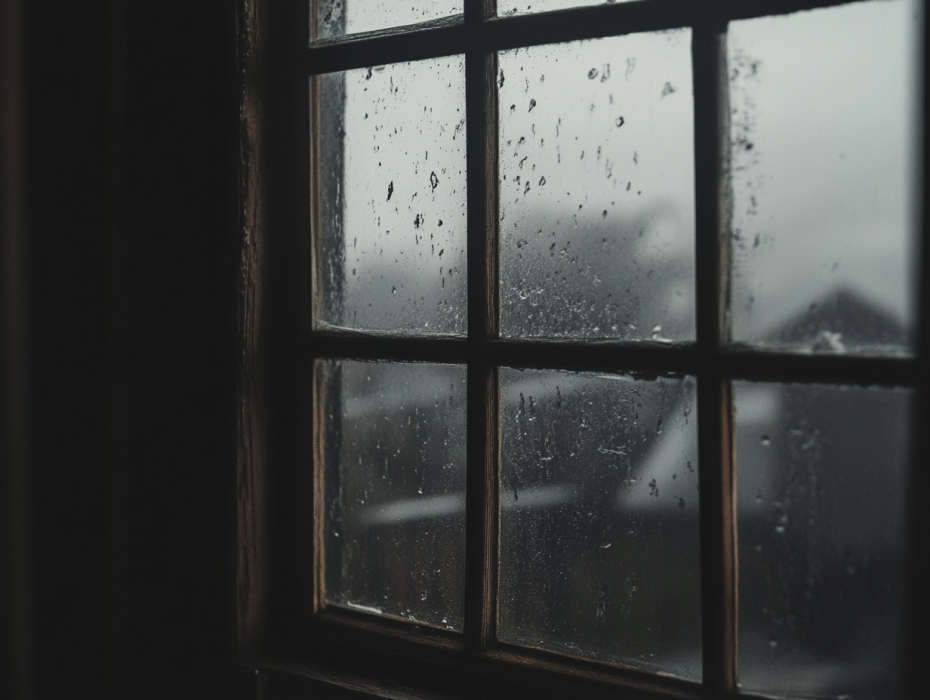
Outside, a storm had rolled in again. Thunder rumbled over the ground like subterranean groaning. As lightning flashed against the windows, Helen realized the strange symmetry. The world above was trembling, just as it had seventeen years earlier, when no one had fully heard what Ward was trying to say.
She drove back through sheets of rain, water lashing the windshield. In Room 304, Caleb was awake, Rachel at his side. As Helen entered, he looked up with a focus she hadn’t seen before. “Map…?” he rasped. Rachel squeezed his hand. “She found it, Cal. Your work. The one they buried.”

Helen laid the salvaged pages on a tray table, in clear plastic protectors. Caleb’s eyes tracked the shapes. His fingers moved weakly, tracing lines in the air that matched the red circles. “These… vents,” he managed. “Too… tight. Need… release. Or… ridge…” His hand shook, miming an invisible fracture.
Rachel translated softly. “He always said if the heat couldn’t rise safely, it would force its own path. Through rock. Through towns.” She met Helen’s gaze. “He’s saying it’s happening now.” Helen thought of the recent tremor, the rising data, and the expanding neighborhoods. Something heavy settled in her chest.
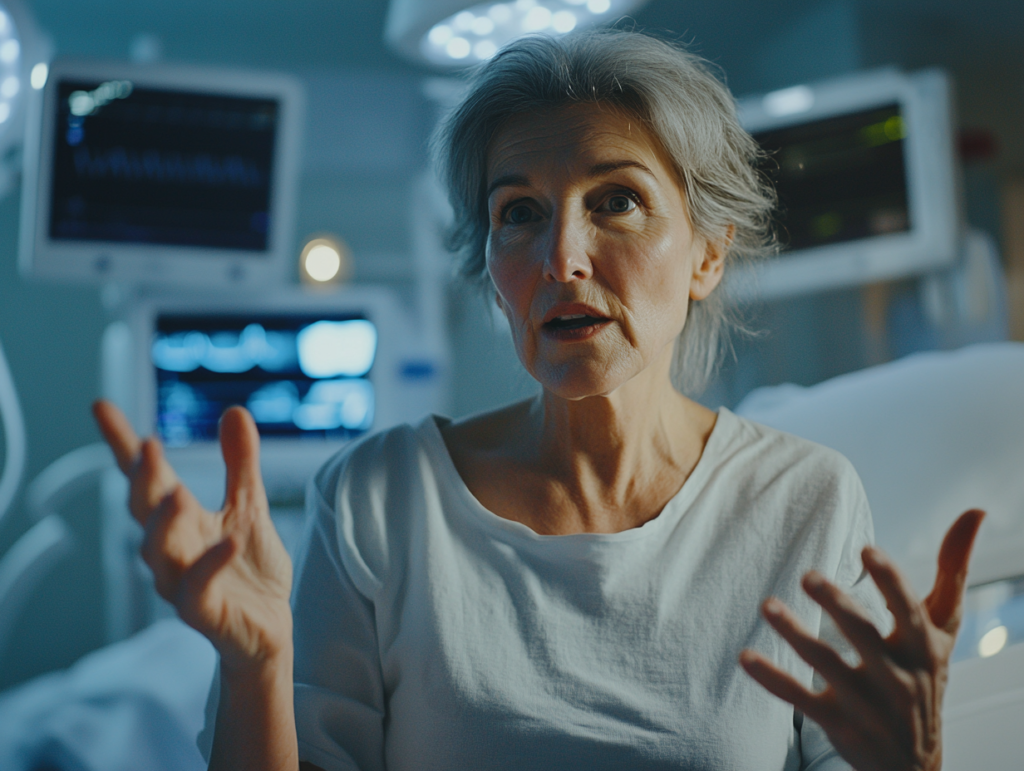
With the detective’s help, they contacted the Bureau of Geological Safety. An emergency meeting was scheduled. Helen arrived with Rachel and the detective, carrying the drive and the recovered maps sealed in evidence sleeves. At first, the officials listened politely, bored. Then the first seismic overlay appeared on the screen.
The graphs showed identical pressure surges beneath Marlin Ridge: Ward’s seventeen-year-old data aligning eerily with current USGS readings. After verifying timestamps, instrument logs, and coordinates, analysts admitted the pattern was undeniable. One official rubbed his temples. “If these projections hold,” he said, “we’ve built a town on a faulted pressure cooker.”

Within hours, a rapid on-site survey was ordered. Fresh readings confirmed what Ward had once tried to warn: the vents were partially sealed and the heat trapped. Controlled relief wells were recommended as quickly as possible. Evacuation alerts began to roll out across the ridge, phone screens lighting up with unfamiliar urgency.
Back at Memorial, Helen found Caleb half-awake, drifting between worlds. Machines hummed around him, but for once the ground felt steady. She took his hand. “They saw your work,” she said. “They’re acting on it now. Evacuations. Pressure release. You didn’t get to publish—but they finally listened.”

“You… heard me,” he breathed. “You left proof,” she replied. “I just dusted it off.” He tried to laugh, but it came out as a sigh of relief, a weight leaving his chest. Somewhere far beneath them, drills pierced rock to help the earth exhale.
A week later, the tremors ceased. The venting operation stabilized the ridge, preventing what headlines later called “a narrowly averted natural disaster.” The coast held. Families returned to intact homes, never knowing that their safety had hinged on a man who’d spent nearly two decades sleeping away on a hospital bed.

Reporters flooded the Bureau for details. Initial briefings mentioned “anonymous archival data.” Once identification was verified, an official statement corrected the record: Dr. Caleb Ward’s recovered research formed the basis of the emergency response. Only Helen and Rachel understood how long that data had waited to be believed.
Weeks later, a courier left a padded envelope on Helen’s desk. Inside lay the Geological Bureau’s official report, embossed in silver: Ward Discovery Verified. The preface read, “Acknowledging Dr. Caleb Ward and attending physician Dr. Helen Sloane for recovery and confirmation.” She traced the letters slowly, feeling how much they contained.

That afternoon, she visited the rehabilitation wing. Rachel was already there, arranging tulips beside Caleb’s bed. His color had returned; his eyes followed every motion with quiet amusement. When Helen entered, he smiled faintly. “Two familiar faces,” he said. “Doctor and Ray—my north and south poles.”
They spent the morning laughing through stories stitched from two different timelines—his frozen in 2008, theirs racing seventeen years ahead. For the first time, conversation flowed without fear of what he might forget. The world had caught up to him, and somehow, with effort, he’d caught up to it.
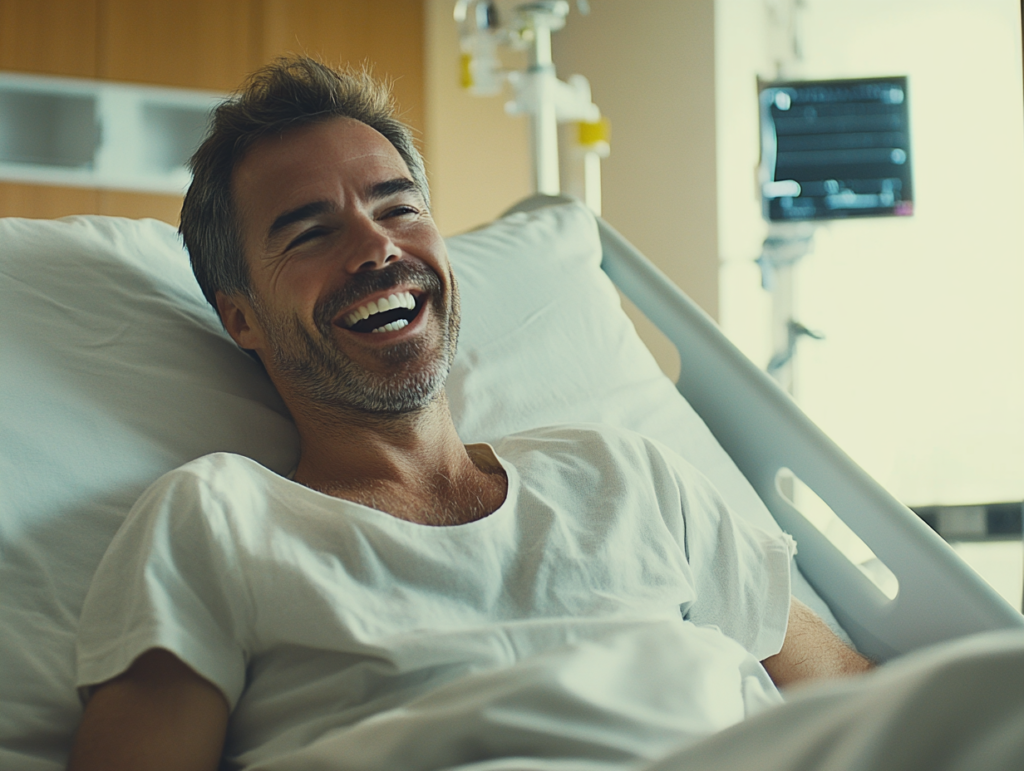
Rachel told Helen she’d petitioned to reinstate every one of her brother’s papers. “He’ll get proper credit now,” she said proudly. The new geothermal protocol, The Ward Guidelines, would bear his name. Caleb listened, smiling softly. “Good,” he murmured. “This time they might read past the footnotes.”
Through the doorway, Helen watched Rachel reading from his weathered notebook. Her voice moved through the room like a returning tide. Between them lay his old pencil and an open page. The brother and sister were finishing a story, the last fault between them finally closing.

Outside, twilight settled across the city like cooled lava. Helen stood for a moment beneath the hospital awning, the world quiet after months of tremors, alarms, and headlines. Some awakenings, she thought, return more than memory; they unearth unfinished truths and deliver them back to the people who never stopped listening.
She glanced up toward the rehabilitation windows, where a single light still glowed. Somewhere behind that glass, a geologist was relearning ordinary days filled with coffee, conversation, and the strange luxury of being heard. The earth beneath the city was calm for now, its message finally acknowledged instead of ignored.

As Helen walked to her car, the ground felt solid because, when it moved, someone had listened in time. She thought back to the first gibberish words he’d forced through a broken throat. She smiled, thinking how long his warning had waited to be delivered and how it might just have saved them all.
